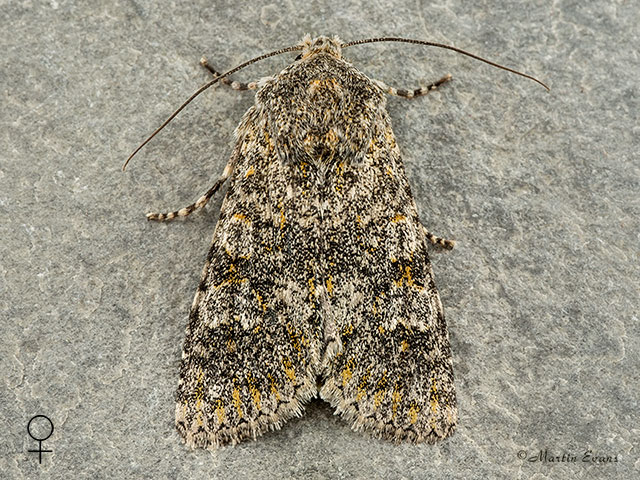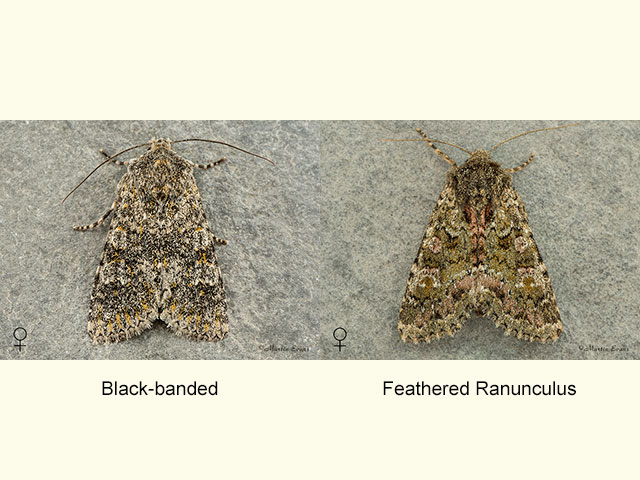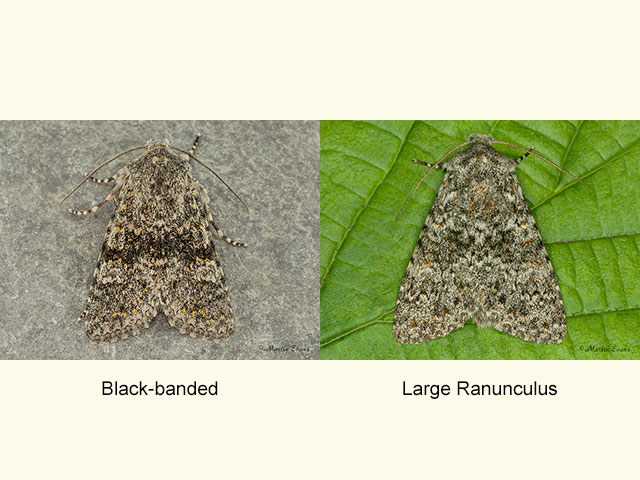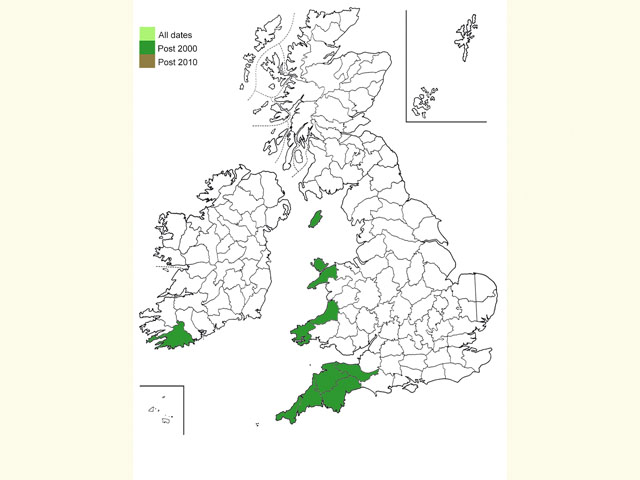Noctuidae
73.236 Black-banded Polymixis xanthomista statices (Gregson, 1869)
Notable A
Similar species: Feathered Ranunculus Polymixis lichenea has grey-green markings rather than grey, without an obvious dark band across the forewing. It has pink or yellow rather than just yellow highlights. The males have feathered antennae. Large Ranunculus Polymixis flavicincta is on average larger (17 to 22mm) and has a less well defined black band across the forewing and a dark band across the hindwing.
Forewing: 16 to 18mm
Habitats: Coastal undercliff, rocky shores and coastal scrub, usually near the splash zone.
Habits: The moth is attracted to sugar and light.
Foodplant: The larva feeds nocturnally on the flowers and leaves of mainly Thrift, but also Sea Plantain, Sea Campion, Harebell and Kidney Vetch. In captivity it will accept sallows. It pupates in a cocoon in the soil under the foodplant or in a sheltered crevice.
On the European mainland the other subspecies have also been recorded feeding on dandelion, hawkweeds, teasel, sorrels, mullein and Genista spp.





